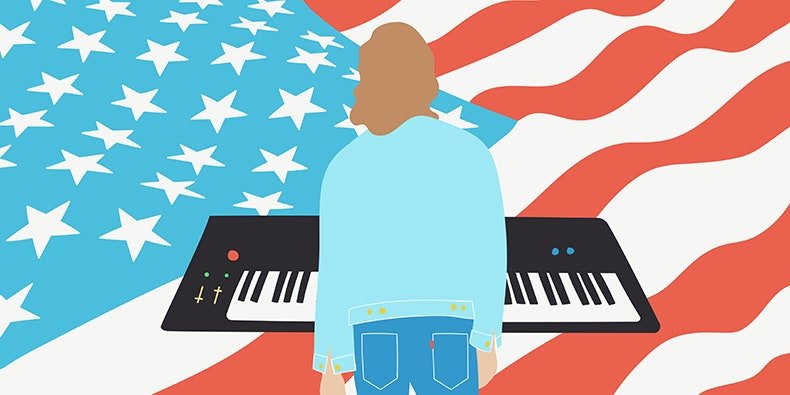Our journey into the heart of rock ensues with heartland rock. The ordinary lives and concerns of American working class produced an equally straightforward music that was heavily influenced by Bob Dylan, Creedence Clearwater Revival and Van Morrison. You could name Bruce Springsteen, Bob Seger and Tom Petty as prominent acts with Springsteen’s Born In the USA becoming a worldwide success.
The Alternatives
Particularly defiant of the synth-based music of the 80’s, the “alternatives”s crept along under the mainstream’s surface, webbing all over thanks to college radios, fanzines, word-of-mouth and tours. Hardly falling into any categories, hence the term coined, alternative rockers bore the baggage of punk rock, new wave and post punk while defining their own unique sound. Early examples of this genre to prove quite fruitful later on were artists such as R.E.M., the Pixies, New Order, the Smiths among many others. Despite their limited commercial success other than a few exceptions, the seeds were sown and the next decade would witness the roar and rumble to its fullest extent. Until then, the pioneers would enjoy the musical freedom thanks to the independent record labels they had signed for.
The rebellious nature of rock music was still as fierce as ever and decided on a witch hunt of too-spiced-up music of overly-groomed artists, brash kids with their down-to-earth, well a few meter into the dirt actually, guitar use and equally untamed looks started yelling the disaffection and disillusion surrounding them into the microphones. Seattle was the breeding ground for “grunge” music, with Soundgarden, Green River and Mudhoney shoveling the dirt road clear for the tractor to arrive in a few years. When Nirvana’s Nevermind hit the charts like a truck, not shying away from the contemporary marketing instruments such as radiotime promotions and MTV coverage, grunge broke into mainstream and Pearl Jam’s Ten with Alice in Chains Dirt followed. The hotbed of grunge would would be deserted in a few years, though, with the untimely passing of Kurt Cobain along with other problems plaguing the titans of the genre.
The British are Always There
The British who were longing for a new invasion, not so fond of the grunge that had taken US soil by storm, fell back to basics of the 60s and 70s to reinvent their kind of rock though catchy melodies and more local concerns. Suede and Blur gave the greenlight and Britpop was a go. Soon Blur’s “adversary” would join as Oasis would take to the stage as well as Pulp and Supergrass. These two would be pitted against each other with the latter managing success spanning over the years.
Grunge was not dead though, it just was more commodifiable. Dave Grohl’s Foo Fighters defined the new, more TV-friendly rules and Bush, Audioslave, Creed followed. Original movements angst was no more but more listeners seeped into the post-grunge scene thanks to the commercialization. Some take this as a blasphemy against grunge’s legacy, but, hey, music is an animal of evolution and evolution needs phases to materialize.
We’re getting closer to today, folks, keep rockin’!
Oasis – Stop Crying Your Heart Out was playing at the end.
Anıl Uzun
